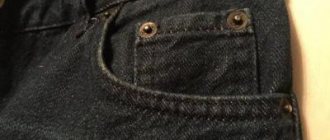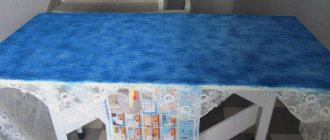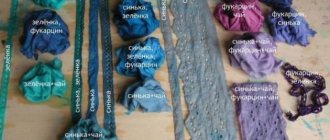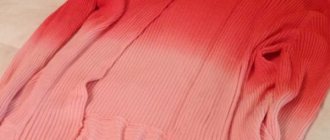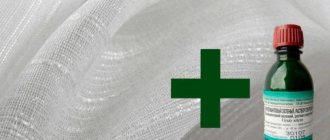Luxurious fur fades over time, turns red, and loses its original appearance. Before you dye arctic fox fur at home, you should familiarize yourself with all the nuances of fur processing. If you follow all the recommendations exactly, your vest, fur coat, hat or trim on the hood will look even better than after purchase.
Reasons for tinting at home
Fur by its nature can be artificial (synthetic) or natural. Sometimes it is quite difficult to distinguish them visually. But real fur will always cost more than faux fur. When buying various items of outerwear made of fur or leather, everyone hopes for their long service and perfect appearance. But time passes, and many people feel the need to paint part or all of the pile of the product. The reasons for this need may be the following factors.
Faux fur dyeing process
- Yellowed spots are a natural change in the pigmentation of natural hair under the influence of time.
- Poor-quality painting – initially the product could have been painted without following special technology.
- They used poor quality paint - unscrupulous manufacturers could save money on the paint they used for fur, so the item quickly lost its proper appearance.
- Household damage to color and wool during wear. Regardless of whether the fur is real or artificial, it can be accidentally damaged by the person himself. There are many reasons for this: they were burned, stained with paint, something was spilled, etc.
- Color fading - under the influence of ultraviolet light, the original shade of the pile can fade and fade.
Note! In any of the above cases, it is necessary to restore the color, that is, you need to dye the hair of the product.
Interesting read
Fur paint Fur-Fresh
The following products are most often used for coloring and tinting:
- hair dye;
- Furasol spray;
- aerosol Salamander;
- spray paint in cans from any manufacturer.
Note! There are not as many special products on the market as we would like. Despite the fact that Salamander fur dye and Furasol spray are very popular, you should first read reviews about their use. After all, someone could tint the fur of a fox or beaver, and you, for example, have an expensive mink. It is necessary to take into account all the nuances and properties of the pile itself.
Coloring with hair dye
Some nuances of choosing paint
Important! First of all, consider the size of the product or the desired area of painting. The spray consumption will depend on this. Salamander fur paint in aerosol is easier to spray and dries very quickly. But aerosols are not so easy to reach under the fur. In order to evenly tint the entire product and the skin, it is better to process it completely using the dipping method.
Salamander faux fur paints are no less practical and durable. In terms of cost, they are practically no different from sprays and aerosols for natural fur. There are not many shades offered, mostly only the most popular colors, close to natural and classic. If you are not confident in your knowledge and skills, it is better to use the services of specialized workshops.
Dyeing process
It is recommended to dye any natural fur a couple of shades darker than its natural color. What means to use:
- hair dye;
- tint shampoo/balm;
- aerosol paint for suede;
- spray dyes for fur;
- clarifier
Bleaching agents damage hair. After bleaching, a fur coat will last less than originally planned. It's worth considering whether drastic changes are needed or whether it should be painted a darker color.
Applying hair dye
Animal fur and human hair are similar in structure. This product is ideal for dyeing fur. Before use, you should test the effect on a small, inconspicuous area of the item. If necessary, first remove yellowness from clothes. After this, they begin painting. High quality ammonia paint is recommended.
How to use hair dye correctly:
- Wear gloves. Dilute the product according to the instructions.
- Apply to the product with uniform, quick movements. Rub it all over the fur - no stains should remain. Movements must be careful so that the hairs do not break.
- Leave for the time specified in the instructions. Wash in clean warm water with shampoo.
- For softness and shine, apply hair balm. Wash off with running warm water.
- Rinse with a solution of vinegar in water. A tablespoon is diluted in a liter of water.
After staining, the cream is applied to the skin again. The item is blotted with a towel and dried. To prevent clothes from shrinking, they are pinned to a hard surface with the fur facing up.
To paint it black, one procedure is not enough. This is done 2-3 times.
You should not do complex dyeing or highlighting of wool yourself. This kind of work should be entrusted to professionals. If you have experience in dyeing your hair this way, you can try:
- apply paint to the ends;
- wrap in foil and leave for the required time;
- wash off carefully.
If you dye a natural fur coat at home correctly, it will last for a long time. The color will begin to fade after 7-9 months. After this time, it is recommended to update the color.
This is interesting
Industrial dye for fur coats is almost identical in composition to hair dye.
Aerosol
Suede product is suitable for dyeing part of the product. The ends of the Arctic fox's coat may turn yellow over time. How to spray paint fur:
- spray at a distance of 70 cm from the item;
- Move the spray all the time so as not to stick the hairs together;
- After spraying, comb through, then they will not stick together.
There is a special paint for natural fur in the form of an aerosol. A small area is dyed with it, for example, a fur collar. This part should not come into contact with the bag; constant interaction will leave a mark. How to do:
- spray the desired area on a jacket or fur coat;
- massage for distribution;
- dry naturally.
You won't be able to paint it a completely different color with a spray. You can enhance the shade, make it richer and deeper.
Other options
You can recolor fur items in the following ways:
- A yellowed mink hat is lightened with the following composition: combine a couple of tablespoons of hydrogen peroxide and 10 drops of ammonia. Wet the ends of the fibers so that the liquid does not get on the skin.
- You can paint a red fur coat with a manganese solution. It must be concentrated. Apply the solution with a new dish sponge and make sure that the skin does not get wet.
- Tinting with a tinted shampoo will help make the color deeper and richer. This is true if your fur coat, hat or vest was previously dyed with hair dye. The tint maintains the color to delay the time of the next hair dye application.
- To soften an old fur coat and give it shine, you should use hair balm. This is done after dyeing or mixed with a tint. Finish the staining by rinsing in a vinegar solution.
- Rabbit fur is dyed at home only in extreme cases with delicate dyes. It is very gentle and thin.
- Fur inserts on coats are painted carefully so as not to stain the main material. If the fabric allows it, sew a piece of fabric onto the main part with a few stitches. You can wrap a piece of unnecessary fabric and secure it with a pin.
How to dye faux fur with your own hands:
- remove dirt and dust with a cotton pad and shampoo, rinse with water;
- To update the color, use a toning shampoo;
- use dye for faux fur, but not for hair;
- To ensure uniform distribution of color, the item is pulled and fixed;
- brush along the fibers without missing the fabric;
- After the required time has passed, wash it, comb the fur, and leave it to dry.
Causes of fur fading
Most varieties of natural fur are dyed; even natural shades of pile are tinted to add richness of color and shine. There are factors that lead to the loss of visual appeal of fur, and this is primarily fading.
Fur coat before and after painting
Trouble may occur for the following reasons:
- the appearance of yellow spots is due to natural pigmentation;
- violation of fur dyeing technology;
- use of low quality dye;
- exposure to sunlight and improper storage of fur products leads to fading of the pile;
- Careless handling of a fur coat can lead to the appearance of burns and stains.
If the fur has turned yellow, then before painting it is lightened with hydrogen peroxide, the treatment is carried out using a cotton pad soaked in the product.
Dyeing rabbit fur
Preparation
In order for you to get a very good effect, the fur product must be prepared for painting. Then the paint will apply much more evenly and there will be no bald spots. The most important thing is to thoroughly clean your fur coat or vest. To do this, you need to prepare a mixture of the following substances:
- 2 tbsp. l. salt;
- 1 tbsp. l. ammonia;
- 2 tbsp. l. soda;
- 1 tbsp. l. washing powder;
- 2 liters of warm (not hot) water.
All components must be mixed and the resulting mixture carefully applied to the fur. Lightly brush the bristles so that not only the top, but also the bottom part is cleaned. Then moisten a clean cloth with water and wipe the fur from the composition.
After such cleaning, the fur must be dried naturally, without using heaters or a hair dryer. It is also not recommended to leave the product exposed to direct sunlight.
How can you tint fur?
The expensive service of dyeing a fur product forces many to resort to carrying out the procedure themselves.
Coloring and tinting can be done at home using:
- spray, for example, Furasol;
- aerosol spray Salamander;
- hair coloring products.
Fur of different shades
Before purchasing fur dye, you must carefully read the instructions for using the product. The fact is that the choice will depend on the length of the fur, its shade, the area of paint coverage, and the type of fur.
If you need to refresh the fur, then choose paint in the same tone as the color of the fur. If a thorough painting is needed, then the color of the dye should be darker than the pile.
Caring for fur after dyeing
Fur loves frost; it fluffs up in a special way at negative temperatures. Therefore, it is recommended to first comb the painted product with a thick brush in all directions, then hang it on the balcony or “walk” in frosty weather when the opportunity arises.
Important! It is useless to repaint a collar that is too old; its shabby interior will not withstand the aggressive effects of a chemical dye.
If you decide to tint a short fur coat or vest, after modernization it is not advisable to wear it in wet weather. High-quality paint does not fade, it does not give dirty streaks in the rain. Still, it is better to refrain from such experiments - the Arctic fox turns red and dull from dampness.
It is recommended to comb the painted product with a thick brush.
Aerosol Salamander
Aerosol fur paint is easy to use. However, it is necessary to take precautions: paint with the windows open, protect the table surface with oilcloth or polyethylene, put on gloves on your hands, and protect your respiratory tract with a respirator.
The aerosol is applied from a distance of 20 cm and evenly sprayed over the fur. The applied paint is evenly distributed using a comb or brush along the entire length of the pile.
The aerosol pigment penetrates well into the pile, making the color permanent. Salamander perfectly dyes both natural and artificial fur. Dye is suitable for mink fur, but it is better if a professional dyes expensive fur.
Hair dye
At home, a method of coloring hair with a hair product has proven itself. It is well suited for dyeing mink and arctic fox. The fur is pre-cleaned in any convenient way.
Mink paint is selected from a trusted manufacturer. It should be checked on a small piece of paper, which is usually included with the fur product.
To spray paint, use a spray bottle from a distance of 20-25 cm. The applied paint should be distributed with a brush. Drying is done with a hairdryer, but it is better to let it dry naturally. The shine of the pile is given with the help of hair balm, which will also soften the fur. After a few minutes, the balm must be removed with a damp cloth.
The hair dye stays on the fur pile for 8-9 months, then you need to repeat the dyeing.
This method is suitable for natural and artificial fur.
When purchasing a spray and aerosol, you should pay attention to the expiration date of the dye, and you should also purchase the dye in specialized stores to avoid disastrous results: uneven coloring, constant clogging of the spray bottle hole, unstable paint that will stain clothes and skin.
Tips and tricks
When dyeing fur, it is important to know some nuances:
- The fur you decide to dye should not be too shabby.
- Only clean fur will dye well, so it must be cleaned first.
- The yellowed white fur of the Arctic fox can be simply lightened.
- Before using any dye, be sure to test it on an inconspicuous area of fur.
- When painting, you can hide some flaws and defects.
- Instead of full-fledged paints, sometimes you can use small folk tricks. For example: the fur of a red or steppe fox can be quickly and painlessly renewed using a strong solution of potassium permanganate. In this case, use a small sponge. It needs to be dipped into the solution and passed over the villi, being careful not to touch the core.
- After dyeing and drying, the fur must be combed so that it becomes fluffy again.
- Using tinting shampoo, you can create a unique decor on your fur product. You just need to show a little imagination.
Now you know whether it is possible to dye the fur of the Arctic fox and other fur-bearing animals, and you can also imagine the technology of this process. The main thing is to strictly follow all instructions. And your favorite and cozy fur coat will delight you with its warmth and impeccable appearance for some time to come. If you do not dare to take such an important step as dyeing fur, then contact specialists at a dry cleaner or workshop for repairing fur products.

